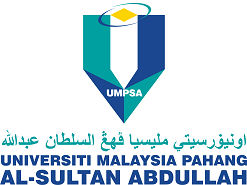Characterization of cohesive model and bridging laws in mode I and II fracture in nano composite laminates
DOI:
https://doi.org/10.15282/jmes.12.4.2018.24.0370Keywords:
Cohesive model, Bridging law, Nanocomposite, Traction-separationAbstract
The cohesive model and traction-separation curves have brought a considerable possibility for researchers and fracture engineers to assess and simulate failure in composite laminates. Reliable determination of the traction–separation laws is very pivotal to the success of this approach in finite element methods. The objective of this paper is assessment of nanoparticles effect on bridging laws, cohesive mechanism and traction-separation parameters of nanocomposites mode I and II fracture. To do this analyzing of the experimental data from double cantilever beam, and end notched flexure tests including construction of the R-curves (energy release rate versus crack length), reconstruction of these curves in terms of the pre-crack tip opening and sliding displacement, and calculation of the corresponding bridging and traction-separation laws through the J-integral approach were carried out. For the calculation of the energy release rate in Mode I, three corresponding data reduction schemes namely Corrected Beam Theory, Experimental Compliance Method and Modified Compliance Calibration are utilized, while Compliance Calibration Method, Corrected Beam Theory and Compliance-Based Beam and II fracture are applied for that of mode II. The main concern of this research is introduction of critical parameters of two modified models to simulate mode I and II fracture. Adding 0.43 wt% nanoparticles to composite DCB samples leads to increase of 116%, 68% and 70% in GI,0 calculated by CBT, ECM and MCC respectively, and a 72% increase in GI,ss is measured by CBT, while this value for ECM and MCC is 110% and 48%. Adding 0.2 wt% nanoparticles to the composite samples results in 86% (50 MPa) increase in critical stress in mode II fracture calculated by method CBBM. This method presented the lowest value for critical displacement, fluctuated between 0.08-.11 mm in mode II.
References
Hoekstra AJ, Derksen JJ, Van Den Akker HE. An experimental and numerical study of turbulent swirling flow in gas cyclones. Chem Eng Sci. 1999; 54: 2055-2065.
Obermair S, Woisetschlager J, Staudinger G. Investigation of the flow pattern in different dust outlet geometries of a gas cyclone by laser doppler anemometry. Powder Technol.2003; 138:239–251.
Ko J. Numerical modelling of highly swirling flows in a cylindrical through-flow hydrocyclone, Thesis. Royal Institute of Technology, Stockholm, Sweden. 2005.
Houben JJH, WeissC, Brunnmair E, Pirker S. CFD simulations of pressure drop and velocity field in a cyclone separator with central vortex stabilization rod. Journal of Applied Fluid Mechanics.2016;9:487-499.
Gupta A, Kumar R. Three dimensional turbulent swirling flow in a cylinder: Experiments and computation. Int J Heat Fluid Flow. 2007;28:249-261.
Hreiz R, Gentric C, Midoux N. Numerical investigation of swirling flow in cylindrical cyclones numerical investigation of swirling flow in cylindrical cyclones. Chem Eng Res and Des.2011; 89:2521-2539.
Hreiz R, Gentric C, Midoux N, Lainé R, Fünfschilling D. Hydrodynamic sand velocity measurements in gas–liquid swirling flows in cylindrical cyclones. Chem Eng Res and Des.2014; 92:2231–2246.
Chen J, Haynes BS, Fletcher DF. Numerical and experimental study of tangensially injected swirling pipe flows. 2ndInternational Conference on CFD in the Minerals and Process Industries.Melbourne, Australia. 1999.
Nemoda S, Bakic V, Oka S, Zivkovic G, Crnomarkavic N. Experimental and numerical investigation of gaseous fuel combustion in swirl chamber. Int J Heat Mass Transfer.2005; 48:4623–4632.
Escudier MP, NicksonAK, Poole RJ. Influent of outlet geometri on strongly swirling turbulent flow through a circular tube. Phys of Fluids.2006;18:1-18.
Escue A, Cui J. Comparison of turbulence models in simulating swirling pipe flows. Appl math model.2010; 34:2840-2849.
Vazquez JAR. A computational fluid dynamics investigation of turbulent swirling burner.Thesis. University of Zaragoza, Zaragoza, Spain. 2012.
Bourgouin JF, Moeck J, Durox D, Schuller T, Candel S. Sensitivity of swirling flows to small changes in the swirler geometry. CR Mecanique. 2013;341.
RedaE,ZulkifliR.HarunZ. Large eddy simulation of wind flow through an urban environment in its full-scale wind tunnel models. Journal of Mechanical Engineering and Sciences.2017; 11:2665-2678.
Galvan S, Reggio M, Guibault F. Assesment study of k-ε turbulence models and nearwall modeling for steady state swirling flow analysis in draft tube using fluent. Engineering Applications of Computational Fluid Mechanics.2001;5:459-478.
Shamam KK, Birouk M. Assessment of the performances of rans models for simulating swirling. The Open Aerospace Engineering Journal.2008; 1:8-27.
El-Behery SM, Hamed MH. A comparative study of turbulence models performance for turbulent flow in a planar asymmetric diffuser. World Academy of Science, Engineering and Technology.2009;53:769-780.
AroussiA, Kucukgokoglan S, Pickering SJ,MenacerM. Evaluation of four turbulence models in the interaction of multi burners swirling flows. 4thInternational Conference On Multiphase Flow.New Orleans, Louisiana, USA. 2011.
Liu C, Liu C, Ma W. RANS detached eddy simulation and large eddy simulation of internal Torque converters flows: A comparative study. Engineering Applications of Computational Fluid Mechanics.2015; 9:114-125.
Ansys Inc. Ansys documentation: Solver theory. United States:Canonsburg;2013.
Bindar Y. Computational engineering on turbulent multi-dimensional flows (in Indonesian language),First Edition.Bandung:ITB Press;2017.
Launder BE, Spalding DB.Mathematical models of turbulence.London:Academic Press. 1972.
Launder BE, Reece GJ, Rodi W. Progress in the development of a Reynolds-stress turbulence closure. J Fluid Mech.1975; 68:537–566.
Patankar SV. Numerical heat transfer and fluid flow. Washington DC:Hemisphere;1980.
Chung TJ. Computational fluid dynamics.New York:Cambridge University Press;2010.
Xia B, Sun DW. Applications of computational fluid dynamics (CFD) in the food industry. Comput Electron Agr.2002;34:5-24.
Bindar Y. Geometry effect investigation on a conical chamber with porous media boundary condition using computational fluid dynamic (CFD) technique. ITB J. Eng. Sci. 2009;42:97-110.
Elsayed K, Lacor C. Optimization of the cyclone separator geometry for minimum pressure drop using mathematical models and cfd simulations. Chem Eng Sci. 2010; 65: 6048-6058.
Lopes GC, Rosa LM, Mori M, Nunhez JR, Martignoni WP. CFD study of industrial FCCrisers: the effect of outlet configurations on hydrodynamics and reactions. Int J Chem Eng.2012; 2012:1-16.
Talbi K, Nemouchi Z, Belghar N. An experimental study and a numerical simulation of the turbulent flow under the vortex finder of a cyclone separator. Journal of Applied Fluid Mechanics.2011; 4:69-75.
Riahi A. Turbulent swirling flow in short cylindrical chambers. Thesis.University of British Columbia, Van Couver, Canada. 1990.
Jakirlic S, Hanjalic K, Tropea C. Modelling rotating and swirling turbulent flows: A perpetual challenge. AIAA J. 2002;40:1984-1996.
NoorMM,Wandel AP,Talal Y.Design and development of mild combustion burner. Journal of Mechanical Engineering and Sciences. 2013;5:662-676.
Treedet W,SuntivarakornR.Effect of various inlet geometries on swirling flow in can combustor. Journal of Mechanical Engineering and Sciences.2018;12:3712-3723.
Wang L, Parnell CB, ShawBW, Lacey RE. A theoritical approach for predicting number of turns and cylone pressure drop. ASABE. 2006; 49:491-503.
Hing YK, Chin WM, Heikal MR. Numerical and experimental determination of wavy fin-tube shape factor. Journal of Mechanical Engineering and Sciences.2014; 6:889-900.
Downloads
Published
Issue
Section
License
Copyright (c) 2018 The Author(s)

This work is licensed under a Creative Commons Attribution-NonCommercial 4.0 International License.






